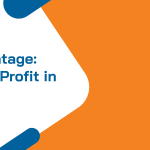
Exhausted at the Top: Why Burnout Isn’t a Leadership Strategy
At some point in the growth journey, many leaders begin to mistake exhaustion for effectiveness. The packed calendar, the late-night Slack replies, the constant “on” mode—these signs of strain have become normalized as symbols of leadership hustle. But here’s the truth: burnout is not a badge of honor—it’s a warning sign.
In high-growth companies, burnout often begins at the top. And when left unchecked, it doesn’t just wear down individual leaders—it ripples through the entire culture, slowing decision-making, draining creativity, and ultimately stalling momentum.
Let’s discuss what burnout truly looks like in executive teams, why it occurs, and how to recalibrate your pace without compromising performance.
How Overwork Gets Normalized
Rapid growth often comes with an unspoken expectation: if you’re not overloaded, you’re not trying hard enough. Founders and senior leaders are especially susceptible to this mindset. They feel responsible for every corner of the business, every number, every fire.
As a result, they:
- Accept back-to-back meetings as the norm
- Lose control of their calendars
- Skip breaks and offload rest as a luxury
- Stay in decision-making loops that others could handle
This culture of urgency trickles down. If the CEO is always online, their team will be too. If leaders reward “grind mode” over thoughtful execution, everyone races—but no one reflects.
Over time, stress becomes the baseline. That’s when burnout sets in.
The Signs of Executive Burnout
Burnout doesn’t always manifest as a complete collapse. More often, it creeps in slowly and looks deceptively like productivity. Here’s what to watch for in yourself or your leadership team:
- Mental fatigue: Decision-making feels slower or heavier than usual.
- Emotional detachment: Leaders seem disengaged or less invested in conversations that once energized them.
- Micromanagement spikes: Overstretched leaders often struggle to delegate.
- Shortened patience: Small issues trigger outsized frustration.
- Lack of strategic clarity: Big-picture thinking gives way to reactive problem-solving.
If left unaddressed, burnout doesn’t just harm leaders—it impacts their teams, their culture, and the company’s ability to scale.
The Ripple Effect of Burnout
When leaders operate from burnout, the ripple effects are felt throughout the organization:
- Team morale drops. Employees mirror leadership behavior. If executives appear stressed, distracted, or fatigued, their teams tend to adopt that same energy.
- Decisions slow down. Burnt-out leaders hesitate, overanalyze, or avoid critical choices altogether.
- Creativity suffers. Innovation requires space. When leaders are in constant motion, there’s no room to think beyond the urgent.
- Culture shifts to survival mode. Instead of collaboration and growth, teams focus on keeping up and staying afloat.
Burnout culture is contagious—but so is a balanced approach. That’s why intentional recalibration at the top matters.
Why Slowing Down Speeds Up Results
This may sound counterintuitive, but in leadership, slowing down is often the key to moving forward more efficiently. When leaders create space to think, delegate, and focus, they make better decisions and move with greater impact.
Here’s what happens when leaders manage pace well:
- They prioritize the right initiatives, not just the loudest ones.
- Teams become more autonomous and confident.
- Communication improves, and there’s room to explain the “why” behind decisions.
- Execution accelerates, not because people are working longer, but because they’re working clearly.
Burnout drains momentum. Clarity restores it.
How Apex Helps Leaders Recalibrate
At Apex GTS Advisors, we work with leadership teams to recognize burnout patterns early and address them through intentional strategy and system design. Some of the tools we use include:
- Schedule audits – We help leaders review their calendars and reclaim time for strategic thinking.
- Delegation frameworks – Not all decisions should land on one person. We map out what to offload and who should be responsible for it.
- Rhythm resets – Weekly and quarterly rhythms are aligned to support communication without overload.
- Team health checkpoints – We facilitate leadership sessions to assess energy, priorities, and focus across departments.
Recalibration isn’t just about fewer meetings or better time blocks—it’s about aligning your leadership energy with what the business truly needs to grow.
Final Thoughts
Burnout isn’t a requirement for success. It’s a risk to be managed—and, more importantly, a signal to be heard.
As a leader, your clarity, energy, and focus are your most strategic assets. Protecting them isn’t selfish—it’s foundational. Your team takes its cues from you. When you lead with balance, you permit others to do the same.
Growth doesn’t require burnout. It requires intention. Let’s build a pace that works—and lasts.
Let’s build a growth plan that doesn’t require exhaustion to work.
Connect with Apex GTS Advisors to talk about leadership sustainability, team alignment, and what recalibrated growth could look like for you.





